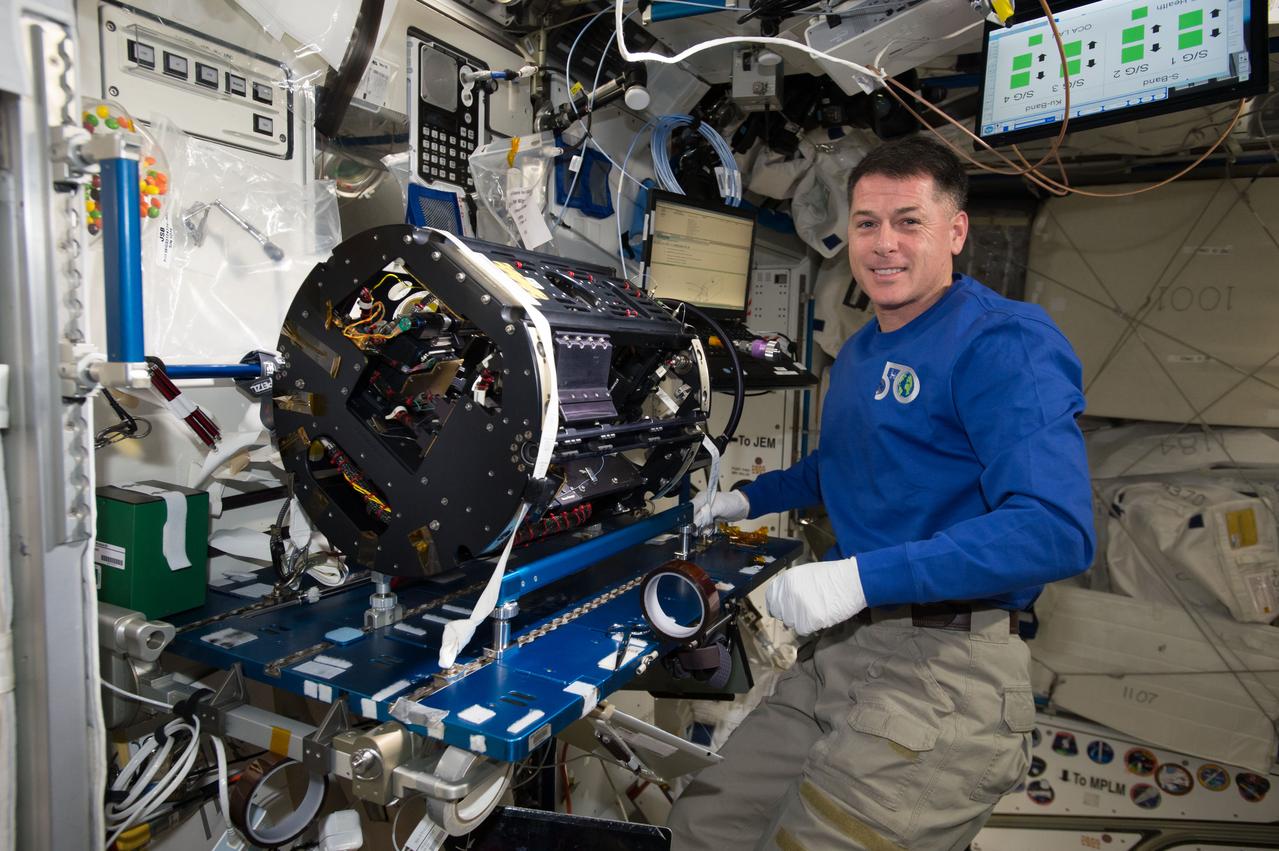
Researchers used an interferometer that can precisely measure gravity, magnetic fields, and other forces to study the influence of International Space Station vibrations. Results revealed that matter-wave interference of rubidium gases is robust and repeatable over a period spanning months. Atom interferometry experiments could help create high-precision measurement capabilities for gravitational, Earth, and planetary sciences.
Using ultracold rubidium atoms, Cold Atom Lab researchers examined a three-pulse Mach–Zehnder interferometer, a device that determines phase shift variations between two parallel beams, to understand the influence of space station vibrations. Researchers note that atom sensitivities and visibility degrade due to the vibration environment of the International Space Station. The Cold Atom Lab’s interferometer uses light pulses to create a readout of accelerations, rotations, gravity, and subtle forces that could signify new physics acting on matter. Cold Atom Lab experiments serve as pathfinders for proposed space missions relying on the sustained measurement of wave-matter interference, including gravitational wave detection, dark matter detection, seismology mapping, and advanced satellite navigation.
Read more here.
Researchers developed a novel method to categorize and assess the fitness of each gene in one species of bacteria, N. aromaticavorans. Results published in BMC Genomics state that core metabolic processes and growth-promoting genes have high fitness during spaceflight, likely as an adaptive response to stress in microgravity. Future comprehensive studies of the entire genome of other species could help guide the development of strategies to enhance or diminish microorganism resilience in space missions.
The Bacterial Genome Fitness investigation grows multiple types of bacteria in space to learn more about important processes for their growth. Previous studies of microorganism communities have shown that spaceflight can induce resistance to antibiotics, lead to changes in biofilm formation, and boost cell growth in various species. N. aromaticivorans can degrade certain compounds, potentially providing benefits in composting and biofuel production during deep space missions.
Read more here.
Researchers burned large, isolated droplets of the hydrocarbon n-dodecane, a component of kerosene and some jet fuels, in microgravity and found that hot flames were followed by a prolonged period of cool flames at lower pressures. Results showed that hot flames were more likely to unpredictably reignite at higher pressures. Studying the burn behavior of hydrocarbons assists researchers in the development of more efficient engines and fuels that reduce fire hazards to ensure crew safety in future long-distance missions.
The Cool Flames investigation studies the low-temperature combustion of various isolated fuel droplets. Cool flames happen in microgravity when certain fuel types burn very hot and then quickly drop to a much lower temperature with no visible flames. This investigation studies several fuels such as pure hydrocarbons, biofuels, and mixtures of pure hydrocarbons to enhance understanding of low-temperature chemistry. Improved knowledge of low-temperature burning could benefit next-generation fuels and engines.
Read more here.









